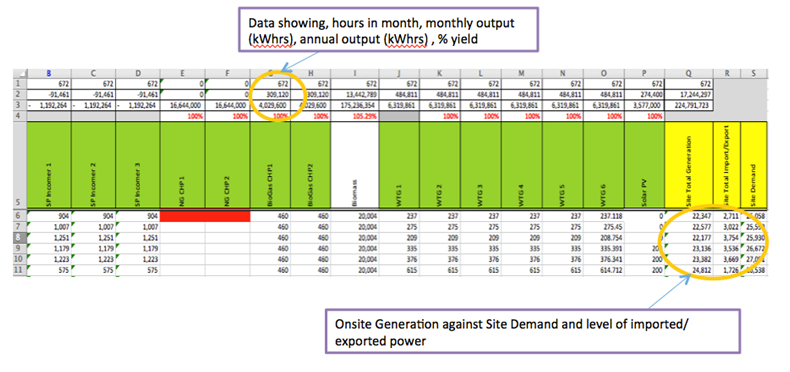Modelling of the Site
The list below shows some of the key features of the technical assessment which was completed in order to collect data needed for some of the metrics being used in the assessment matrix. In doing so, we collected some data from the site (imported power, generation, onsite supply) and some of the future plans for the introduction of Renewables.
- Supply/Demand profiles with each respected case
- Use of Excel to model each renewable energy profile
- Data analysed in hourly time steps
- Full appreciation of site consumption and imported/exported power
- Modelling conducted over a month
- Data from wind turbines collated during winter period
- Each renewable project is incorporated into case scenarios
As we received hourly time steps of data from GSK, we decided to model the site demand and generation of each Renewables in Microsoft Excel. An example of the layout used can be seen below.

Figure: Example of modelling tool for case 9
In row 5 in the figure above is the list of renewables modelled onto the site. Data such as the hours modelled, monthly output in kWh, annual output in kWh and percentage yield can be found on the top of our spread sheet. Percentage yield indicates how much yield we are expecting for the corresponding renewable technologies. To the right of the tool in columns Q, R and S, the onsite generation against site demands and level of imported or exported power can be seen.
In order to use the tool, we first chose our specific renewable energy technologies and integrated it into the tool. As for the demand profile, the demand at every hourly time step was input into the site demand column S. We then insert the energy generated by the respective renewable technologies; the tool will then add the individual generations and the total generation can be seen in column Q. Once all the data was input, the corresponding energy import or export is obtained for every case. The results obtained from the cases are used as inputs into our scoring matrices.